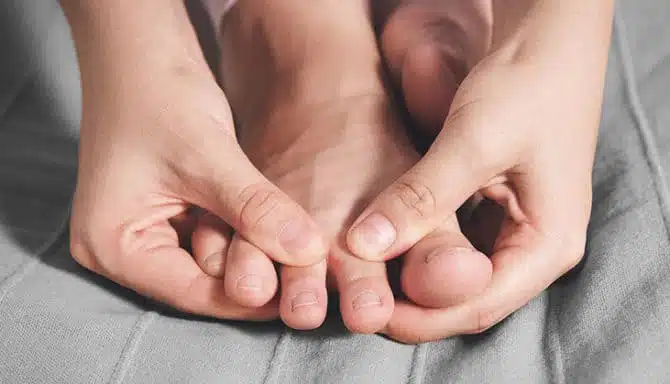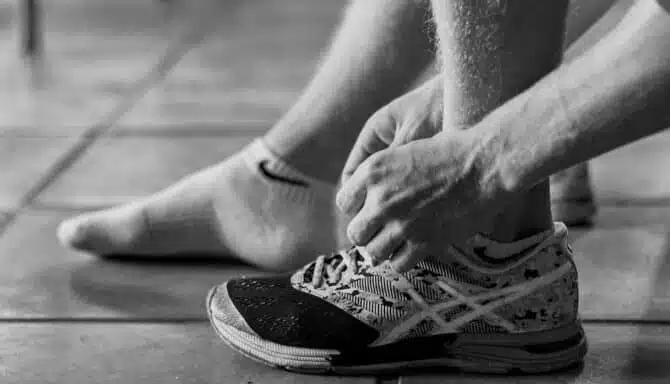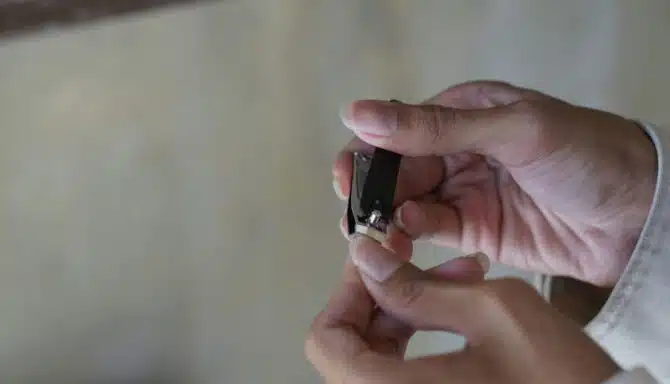Your toes are one of the most essential parts of your body. Toes help your feet bear the weight of your body when you walk. Toes also provide our bodies balance and support. These core functions are important to our everyday life, and the weight our toes bear makes them vulnerable to injury. Plus, the fact that many of us are on our feet for hours on end, toe health is essential.
Below you’ll find the five of the most common toe conditions.
Athlete’s Foot
Athlete’s Foot is a contagious fungal skin infection that afflicts the skin on soles of the feet and between the toes. Fungi prevalent in Athlete’s Foot thrive in dark moist areas and feed on keratin. This means that our feet, which spend most of the day bound up in socks and shoes, present an ideal environment for the proliferation of a fungal infection. Consequently, 1 in 10 people have athlete’s foot, or about 10% of the population making it one of the most common toe conditions. A common sign of an athlete’s foot is translucent white moist skin between the toes on one or both feet.
Additional symptoms of athlete’s foot include:
- A scaly and raw looking rash
- Itching
- Stinging
- Burning
- Foot pain
- Dry skin on the soles of the feet
- Peeling skin on the soles of the feet
- Cracked Skin on the Heels
Fortunately, treatment is simple yet effective. Over-the-counter topical antifungals are the most common remedy for athlete’s foot. Products include medicated creams, ointments, sprays, and powders. Our Toronto foot clinic is open six days a week.
Hallux Rigidus/Hallux Limitus

Hallux rigidus and hallux limitus are variations of a similar toe condition. Both are disorders of the joint at the base of the big toe. Hallux means big toe while rigidus and limitus refers to the damage of the joint and the degree of flexibility of the big toe. Rigidus refers to a rigid big toe, and limitus, a less severe version of injury, refers to limited flexibility and an earlier stage of the condition.
Hallux rigidus is the loss of flexibility due to arthritis in the first MTP (metatarsophalangeal) joint. As the toe stiffens, friction to the joint may lead to pain and/or a Bone Spur — your body’s defense mechanism to prevent further harm. As it’s a progressive condition, damage to the joint cannot be reversed. But, with proper measures including orthotics, proper footwear, and joint exercises, one can live pain free with the condition.
Hallux limitus on the other hand is characterized by limited flexibility in the joint and trouble bending the big toe. Typically, no bone spurs are present (yet). Flexibility is greater with those in hallux limitus than the more progressive hallux rigidus.
Severe versions of hallux rigidus – with complete loss of flexibility in the joint – may require surgery. Options include:
- A cheilectomy, removal of bone spurs from around the big toe joint. This is done to free the joint of volume, and to encourage greater degrees of flexibility.
- A second procedure, which is permanent, is called arthrodesis. In these cases, the joints in the big toe are fused, eliminating the joint surface leaving the joint permanently stiff.
Hallux rigidus and limitus can be caused by abnormal foot anatomy or a history of trauma including turf toe, a toe fracture or repeated strain to the joint, like running for example. However, there are no specific causes. Rather, hallux rigidus and hallux limitus are influenced by several contributing factors.
Ingrown Toenails
An Ingrown Toenail occurs when the side of the toenail curls down and pierces the flesh of the toe as the nail grows. Untreated ingrown toenails can easily become infected.
To start, you’ll want to focus on treatment, and then prevention.
- Place a spacer or splint under the ingrown edge of the toenail
- Soak feet in Epsom salt and water bath at home to flush out the infection and manage pain and inflammation
- Trim the ingrown portion of the nail
- In recurring cases, surgical removal (outpatient) of part of your toenail
- If your toenail becomes infected you may need topical or oral antibiotics
Prevention includes:
- Avoid shoes that crowd your toes
- Trim your toenails straight across and file the corners
- Avoid injury to your toenails
Blisters
Blisters are among the most common toe conditions. Although common, blisters typically are not serious and can be treated immediately for relief within a few days. Blisters are small, fluid-filled bubbles on the upper most layer of the skin. Friction against your skin and your socks and shoes causes your skin to form small bubbles to prevent further damage to the underlying skin. More serious blisters may contain blood as the vessels at the surface of your skin burst.
These skin conditions typically heal themselves within a few days. However, it’s advised to cover blisters either with a basic bandage, tape, or a Band-aid, all of which are available at our Toronto foot clinic. These measures are simply to prevent unwanted popping of the blister and to shield your skin from friction.
To schedule best foot care treatment with our licensed Chiropodists (foot specialists), use the booking form at the bottom of this page or call 416-769-FEET(3338).
Bunions
A Bunion is a deformity of the metatarsophalangeal (MTP) joint. A bony bump protrudes from the base of the big toe causing pain, redness, and sometimes even swelling. Bunions are atop the list of most common toe problems. It affects about 23% of adults. The common age range of onset is 20-50, and women are more commonly affected than men.
Like hallux rigidus and other progressive foot conditions, a bunion is irreversible once it starts. So you can’t reverse what’s already been down, but you can take measures to slow down the deformity over time. The sooner you address the problem, the slower the rate of bunion growth.
Do you have a bunion or hallux rigidus? Read: Hallux Rigidus or Bunions: What’s the Difference?
Measures to help slow a bunion’s progression include:
- Proper Footwear
- A foot assessment for Custom Orthotics
- Over-the-counter footcare products
Surgery is also an option. Typically, surgery includes removing the protruding portion of the bone, and re-aligning the joints in the big toe. Like with any foot condition, educate yourself on the pros and cons of surgery to determine: Is Foot Surgery Worth It? But, there’s still hope for those with bunions. Check out these Effective Ways That you Can Treat Your Bunion Pain.
A bunion’s sibling: A bunionette
Similarly, a Bunionette (or tailor’s bunion) is a bunion on the opposite side of the foot. A bunionette appears on the pinkie toe and affects the fifth metatarsal. It’s smaller than a bunion, but still appears as a bump. Pain associated with a bunionette occurs on the outside of the foot, and tight shoes may exacerbate the condition. Shoes with narrow toe boxes are particularly problematic for those with a bunionette. Narrow toe boxes increase friction against the bony protrusion. The causes of a bunionette are classified as either intrinsic or extrinsic.
Causes include:
- External pressure on the forefoot
- Tight shoes
- Genetics
- Foot anatomy
- Faulty mechanics
Bunion and bunionette treatment is similar. As such, properly-fitting shoes are an essential step. The team here at First Feet Clinic specializes in Shoe Fitting. No appointment is necessary to find a pair of shoes that fit your foot profile. Additionally, stretching your shoe can provide benefits as it artificially provides additional toe room. This allows your bunionette more space in the shoe.
Experiencing Toe Pain? We’re Here For Your Toe Conditions
Our team is trained to handle any and all your foot health concerns including common toe conditions. From bunions to blisters to ingrown toenails and orthotics, we cover all sides of the foot needs spectrum. Call us to ask about actionable steps towards your solution today.
Call us at 416-769-3338 or Click to Book Your Assessment.











